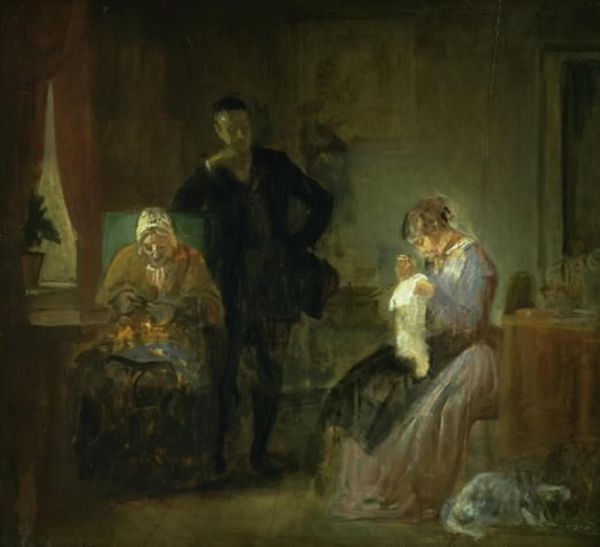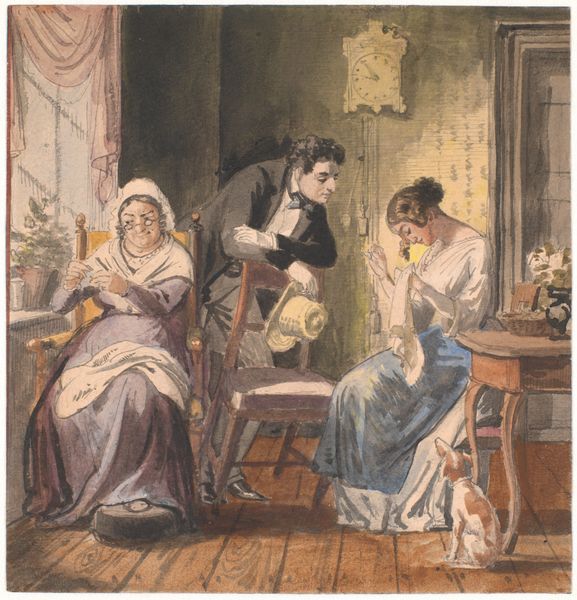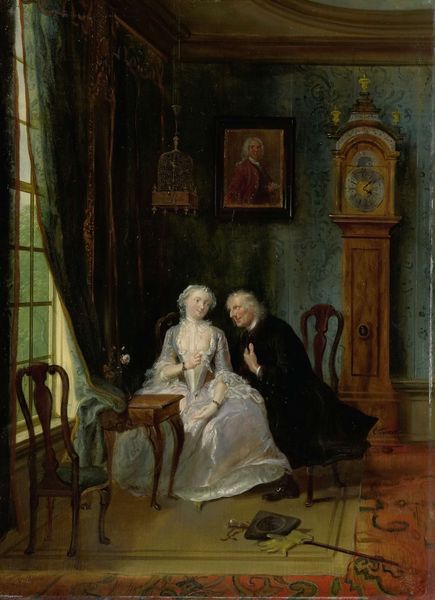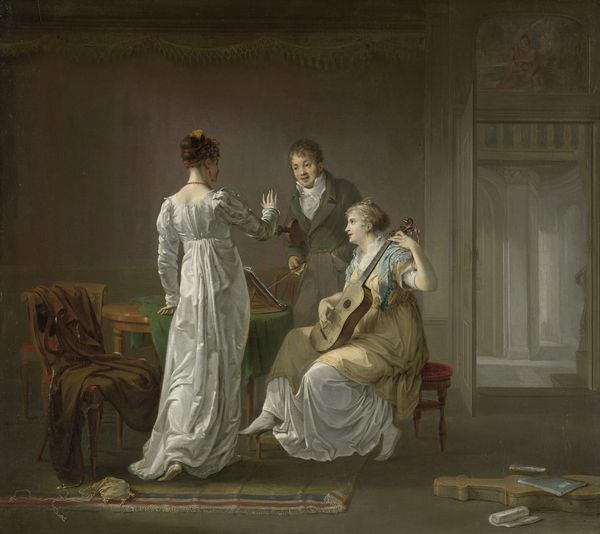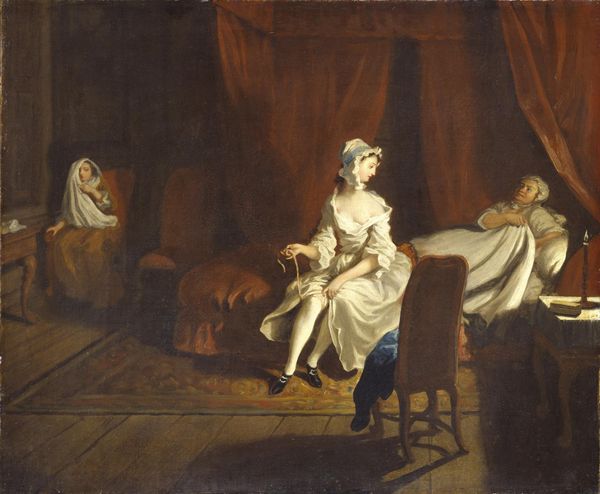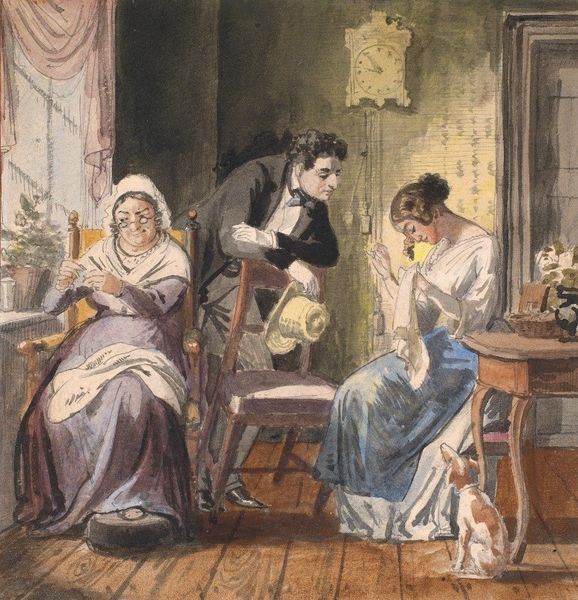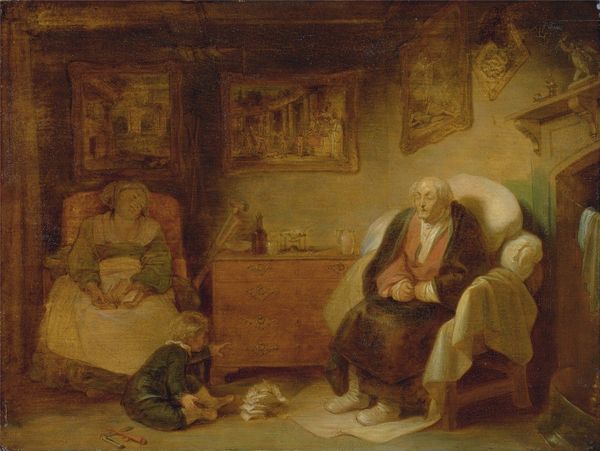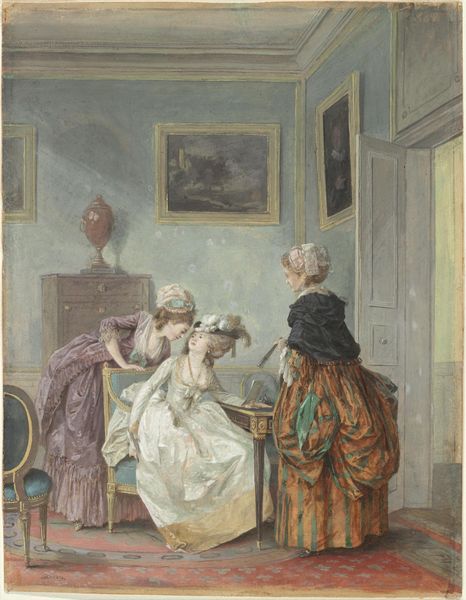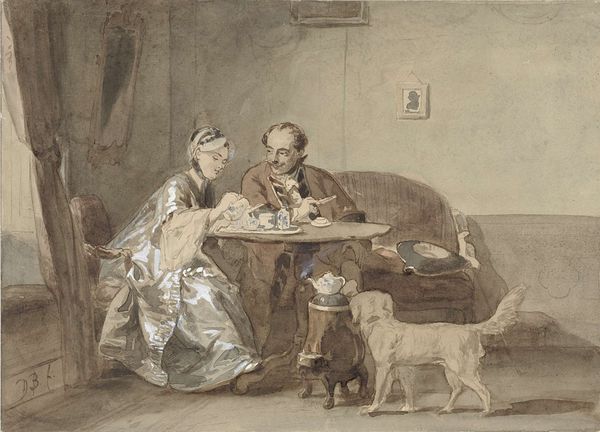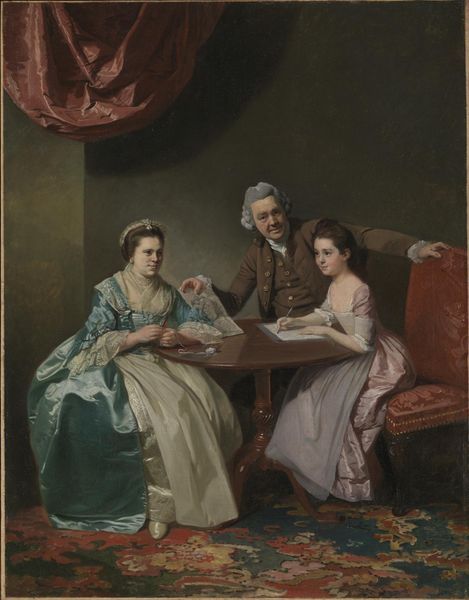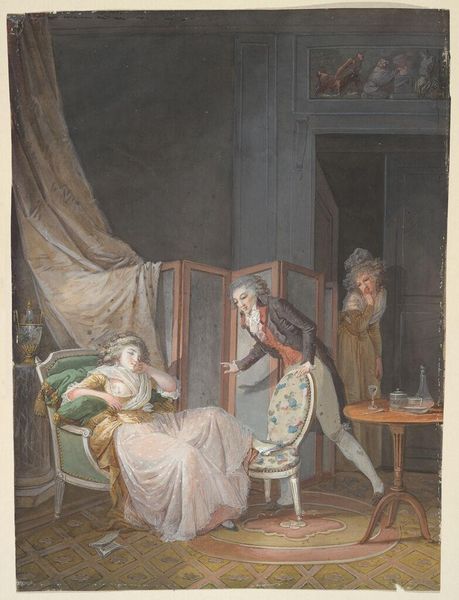
Dimensions: support: 762 x 622 mm
Copyright: CC-BY-NC-ND 4.0 DEED, Photo: Tate
Editor: Here we have John Callcott Horsley's, *The Pride of the Village* from the Tate Collection. It depicts an interior scene, and the texture of the fabrics is quite striking. What can you tell me about the materiality of this piece? Curator: Well, consider the wool and linen in the clothing, likely homespun. The production of these textiles would have been a significant labor investment, a central aspect of village life. How does the artist use these details to convey social status? Editor: I see, so the quality and source of these materials would reflect the family's position within their community? Curator: Precisely. It’s a snapshot of Victorian social fabric, woven from the very threads of their existence. It gives the viewer a tangible glimpse into their daily lives. Editor: That's fascinating; I hadn't considered how much the materials themselves could tell the story. Curator: It is an important consideration. Looking closer, we begin to see the subtle ways that the artist communicates their society.
Comments
tate 8 months ago
⋮
http://www.tate.org.uk/art/artworks/horsley-the-pride-of-the-village-n00446
Join the conversation
Join millions of artists and users on Artera today and experience the ultimate creative platform.
tate 8 months ago
⋮
When this picture was first exhibited at the Royal Academy it was accompanied by a quotation from Washington Irving's short story 'The Pride of the Village', which was written in 1819: 'A tear trembles in her soft blue eyes. Was she thinking of her faithless lover? Or were her thoughts wandering to that distant churchyard into whose bosom she might soon be gathered?.'Irving's story told of an only daughter who was 'the pride of the village'. One year she was the May Queen and caught the attention of a young army officer. When his love proved to be false, the girl pined away in her parents' cottage. Gallery label, March 1993
